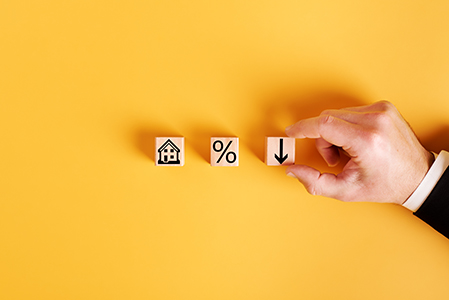As of September, mortgage rates rose for the 11th consecutive month, while options for buyers on the market declined as the industry continues to adjust to higher interest rates.
The average cost of a two-year fixed rate mortgage reached a high of 4.5% in September, an increase of 1.9% since December last year.
According to Moneyfacts, the typical cost of a five-year fixed rate mortgage also rose to 4.33%, an increase of 1.69% since December, and the highest level since November 2012.
Meanwhile, lenders have withdrawn over 500 mortgage products during the past month, leaving 3,890 different deals for borrowers to choose from. This is the lowest level since April 2021 and it’s a fall from more than 5,300 deals at the beginning of December.
The number of different mortgages available dropped for all types of borrowers, from first-time-buyers, to those with large equity stakes in their property.
As for good news, the average amount of time a mortgage is available for before lenders withdraw it is increasing from a record low of 17 days back in August, to 28 days in September.
What are the causes?
Growing inflation has a domino effect, from an increase in the Bank of England’s base rate to higher mortgage rates.
The Bank’s Monetary Policy Committee has hiked the base rate by 1.65% since December last year, in an effort to control inflation.
The increases make it more expensive for lenders to borrow money on the money markers, which leads to the higher mortgage rates for customers.
Is it still a good idea to remortgage?
Despite the increase in mortgage rates seen since December last year, it is still definitely worth remortgaging if you are coming to the end of your current deal.
The average standard variable rate, which is the rate that lenders put you on if you don’t remortgage, has reached 5.4%, the highest level since December 2008.
This rate has seen a continuous growth for nine consecutive months, rising by 0.23% in August, the largest monthly jump ever recorded by Moneyfacts, which started keeping records in December 2007.
The rising rate isn’t expected to slow down any time soon, as standard variable rates typically move up and down in line with changes to the base rate.
Although interest on the average two-year fixed rate mortgage has now reached 4.24%, homeowners with a £200,000 mortgage could still save £136 a month by choosing to remortgage, rather than sitting on their lender’s standard variable rate. This is without even factoring in future interest rate rises.
The advantages of remortgaging
The main benefit to remortgaging is being able to save money by switching to a cheaper deal.
When your fixed, tracker or discounted mortgage deal ends, you will no longer benefit from a preferential rate. Instead, you will automatically move onto your lender’s standard variable rate, and your payments are likely to jump.
Another advantage of remortgaging is that you can ask to borrow more money to carry out home improvements, which will secure a healthy investment in the long run.
You can also lower or increase your mortgage term when you remortgage if you meet the bank’s eligibility criteria, which will further lower your monthly spends.
If you’ve been considering making your next property move and are looking for advice, get in touch with us today.






Share this with
Email
Facebook
Messenger
Twitter
Pinterest
LinkedIn
Copy this link